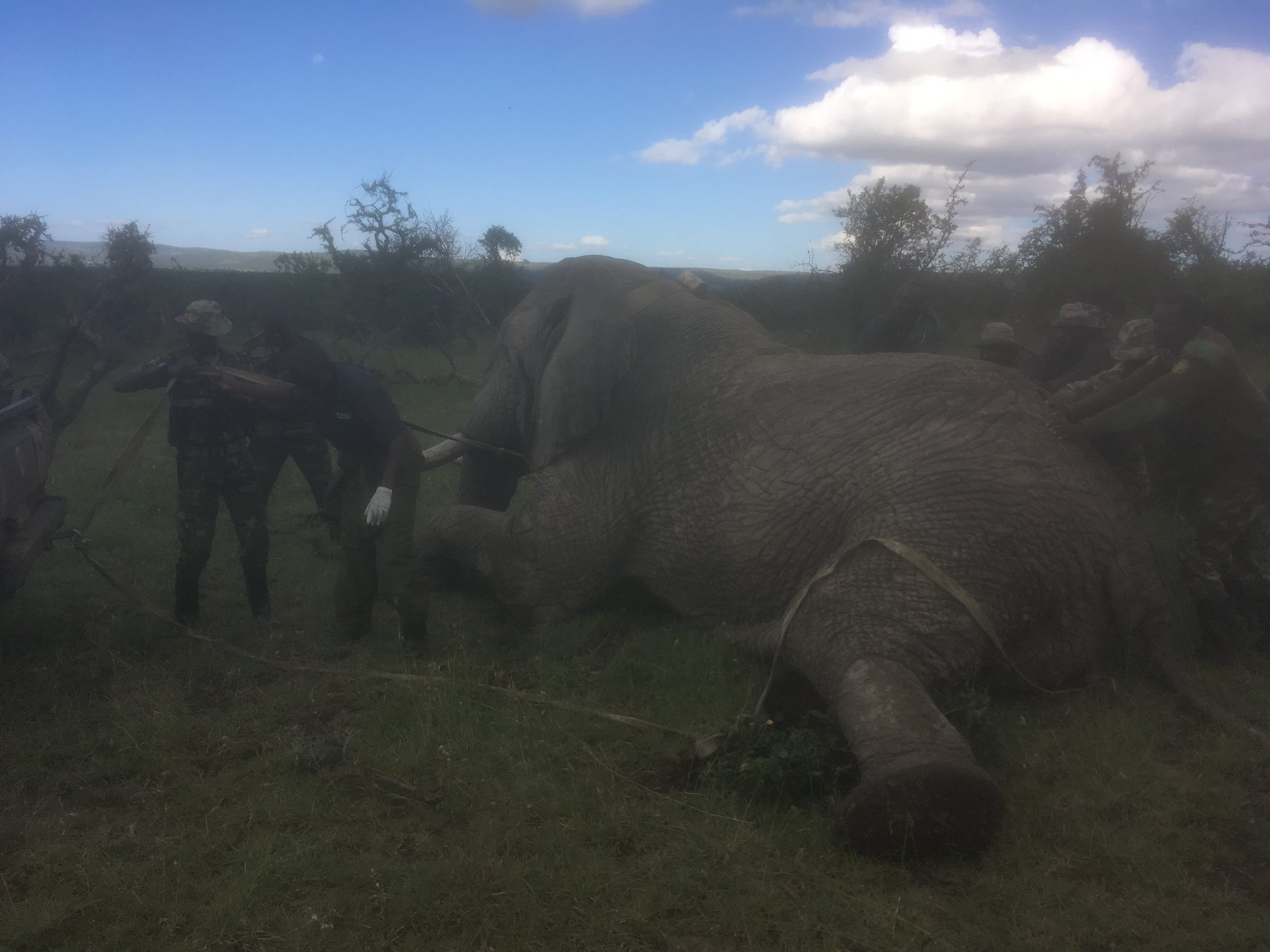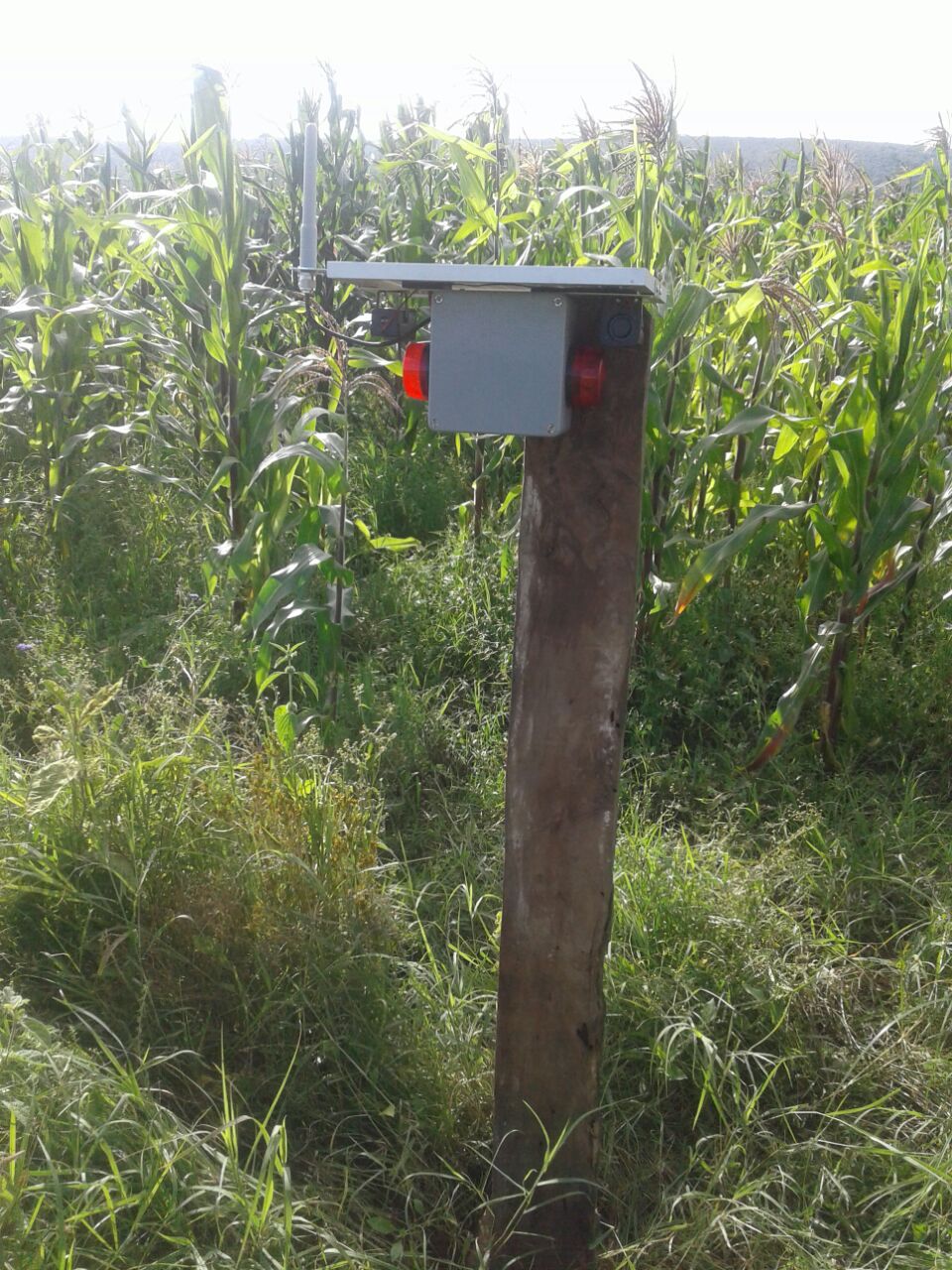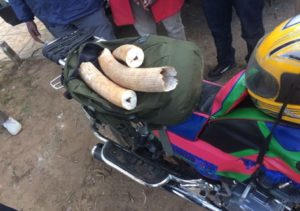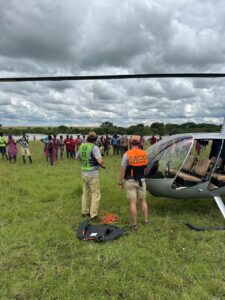Mara Elephant Project saw a marked increase in human-elephant conflict in May and as a result we’ve been working closely with Olarro Conservancy and the David Sheldrick Wildlife Trust (DSWT) Mara Mobile Vet Unit to treat 12 injured elephants this month in a high human-elephant conflict (HEC) area. There are a number of farms and settlements surrounding the Olarro Conservancy that have been experiencing HEC but have not been reporting it. This prompted MEP to move our rapid response unit into this area, so we had a permanent presence to resolve the conflict. The rangers mandate was to build better relationships with the community, follow the large elephant herds to track their movements, identify injured elephants for treatment, respond to conflict, and collect intelligence on suspects. On the 25th we found our collared elephant Limo had been shot presumably by poachers. Vet Dr. Limo indicated that the age of the wound was less than 10 days old which helped the rapid response unit trace back Limo’s tracks on the Save The Elephants tracking app back to a farm that had been raided by elephants. While they were investigating the attack, the community exposed a suspect for attacking Limo and his herd. He was arrested and taken to Kenya Wildlife Service (KWS) HQ in Ewaso Ngiro. The rapid response unit will continue to be based in this area until the attacks have stopped, and all conflict is being properly reported by the community and the conflict season is over.
DSWT Vet Dr. Limo treating MEP collared elephant Limo.
Henrik Rasmussen, the managing director of Savannah Tracking, has deployed five collar-activated alarm systems around farms in high conflict areas. These alarm systems are solar powered and trigger to make a loud alarm sound when the VHF beacon in the elephant collar gets near. This not only alarms the elephants to hopefully leave the area but also alerts the community who might be asleep. Henrik along with MEP ranger units will be testing the effectiveness in the Munyas and Ngoswani areas with known MEP crop raiding collared elephants, Olchoda and Ivy. In addition to this mitigation technology, MEP rangers installed two flashing light fences in Lemek and also worked with Henrik to install the new boma beacons mentioned earlier in this report. MEP rangers are filling out the MEP HEC and HEC mitigation hard copy forms and bringing them to HQ at the end of the month so that the data can be entered into DAS.
 Solar powered alarm systems.
Solar powered alarm systems.

The KWS arrested three suspects in Narok with 4 kg of ivory (pictured left) based on MEP intelligence.Two elephant carcasses were reported in Naboisho Conservancy and the cause of death was unknown due to the decomposition of the carcasses. Additionally, a female elephant was found dead in Ngurumani. The ivory was hacked out by poachers, but the exact cause of death was unclear as it had already decomposed.

The elephant carcass in Ngurumani.
The DSWT Mau Team has re-deployed to the Mau Forest after their graduation ceremony on the 11th at the Emitik Forest station. We are thrilled that there was a good turnout from the community, over 500 people, and the Narok County Government, KWS, police and local administration were all present as well to witness the new ranger team graduating. The new Land Cruiser donated by DSWT and the two new rangers from KWS allows the team to now be fully operational.
We were featured on The Dodo’s Facebook page and on their blog. Thank you to Angela Sheldrick from the David Sheldrick Wildlife Trust who handled that contact and procured our organizations being featured on The Dodo. Elephant Aware shared several great videos of one of our large collared elephants enjoying a down pour in the Mara. Thank you to all of our partners for supporting MEP by tagging us in their social media posts. MEP was featured in Wired UK this month with an interview with C.E.O. Marc Goss highlighting the technology MEP is using to combat poaching and human-elephant conflict. Robinson Helicopter Company also featured MEP in their spring newsletter which goes out to all of their buyers, sellers and customers worldwide.
MEP released our MEP Annual Report 2017, posted on our website, and sent an email out to supporters. We had many people respond to the email to show their support for the accomplishments MEP had in 2017. We have also updated our MEP Privacy Policy May 2018, website and sent an email to all individuals on MEP’s mailing list to ensure we are compliant with the EU’s new General Data Protection Regulation which came into effect on May 25. The Greatest Maasai Mara Photography Competition by the Angama Foundation continues to be a fun way to engage new supporters for MEP. We’ve had some great entries in May benefitting our organization and thank everyone for their participation.
MEP is thrilled to announce that one of our intelligence rangers won $3,000 and was awarded the 2018 Ranger Award from the Paradise International Foundation. He’ll be featured in their brochure and was proud to receive this award in its inaugural year.
In May, MEP received $55,000 from various individuals. Along with other operational costs, the funds will be used to purchase new equipment for the rangers and to acquire a new drone which will be used to run tests on spraying crops with chili powder as a means of preventing crop raiding by elephants. We also received money for the three-year lifespan of a new elephant collar.MEP received $286.97 from Facebook fundraisers and Brooke Isbell is currently running a fundraiser for her birthday that has already hit her goal of $200.
The Mara Elephant Project visitor experience is coming into busy season and we have many people coming from all over the world to visit MEP HQ. We’ve also signed up a total of 17 camps and travel companies and have well over 12 visits scheduled for the next two months. We anticipate this to be a great new way for people to get to know MEP and possibly generate a new database of supporters.
MEP is thrilled to announce that Dr. Jake Wall has accepted the position of Director of Research at MEP starting in January 2019. He will be responsible for: developing and maintaining MEP’s core research strategy; developing research partnerships with other organizations, academics and universities; liaising with key conservation partners such as KWS, Save the Elephants, Mara Predator Programme, DSWT and other relevant partners on research priorities; and exploring research/conservation funding options and assist the C.E.O. in funding applications.
The results of the research will be used to develop reports and position papers to influence and guide management of the ecosystem. All outputs will be shared with MEP’s target audiences and key partners aimed at raising awareness, facilitating more immediate input and action, informing and influencing policy and practice and developing closer working relationships with key partners.
Dr. Wall is an architect of DAS, and elephant tracking system to track elephants in real-time to help protect them against ivory poaching and to study their movement patterns and conservation in the context of the rapid expansion of the human-footprint across Africa. He is currently Geospatial Scientific Advisor to Save the Elephants and working with Vulcan to incorporate other real-time data such as vehicle tracking into the tracking system. We are all thrilled at MEP to have such a high caliber scientist join our organization.
MEP is happy to be hosting Mr. Nathan Hahn at MEP HQ for two months to start his data collection for his PhD with Colorado State University in George Wittmeyer’s lab. Nathan will be focusing on HEC mitigation characterization and we are happy to have him on board. Nathan partnered with MEP to conduct a number of drone training packages for Tanzania Wildlife Research Institute (TAWIRI) and Tanzania National Parks Authority (TANAPA) while he worked for RESOLVE.
Read MEP’s full report below.
MEP Monthly Report May 2018


